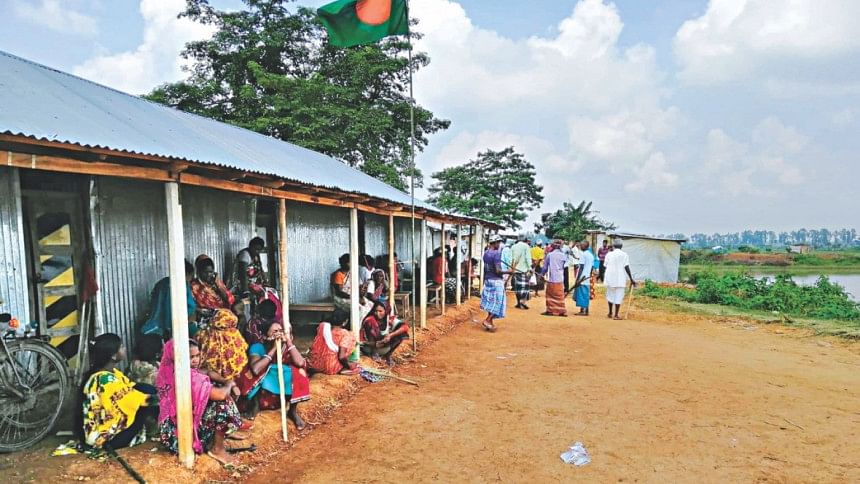Justice for Santals still elusive after three years

It has been three years since Santals living on a sugarcane farm in Gaibandha were brutally evicted by police backed by influentials in an operation that left three Santals dead and many injured with many more missing. Since then, around 1,200 Santal families are living in tents amidst uncertainty and fear. Some of them continue to suffer from the injuries due to gunshots or splinters that are still in their bodies. To add to these woes, more than 100 of the members of the community have had cases filed against them. The plight of the Santals indicates a total apathy towards their rights by the authorities and an attempt to deprive this indigenous community of what they call their ancestral land.
The land had been acquired in 1962 by the then government for sugarcane cultivation and the condition was that if the mill went under, the land would be given back to the Santals. The mill did fail and the Santals returned but they were driven out violently with their homes being looted and torched. Clearly, such acts are a violation of their human rights yet very little has been done to get justice for the Santals.
It is quite baffling why, although a case was filed against 33 people who took part in this eviction drive three weeks after the incident the charge sheet given by the police did not include 11 prime accused that included a former lawmaker, a UP chairman, former UNO and officials of the sugar mill. Also why did the charge sheet not have the names of the police officials directly involved in the attack despite a well-circulated video footage of law enforcers setting fire to the Santal homes?
The attempt to rehabilitate the Santals in other villages, moreover, have not worked even after three years, thus leaving the Santals in total despair. Some of them have returned to their ancestral lands and live in makeshift homes or tents despite the threat of eviction by the administration and mill authorities.
At this point, rehabilitating the Santals to their ancestral land would be the most humane and rational solution. It is the state's responsibility to ensure that the rights of indigenous communities are protected. We hope that those accused of instigating and carrying out the attack will be brought to book and these helpless Santals will not have to face intimidation by the administration or the mill authorities.

 For all latest news, follow The Daily Star's Google News channel.
For all latest news, follow The Daily Star's Google News channel. 



Comments